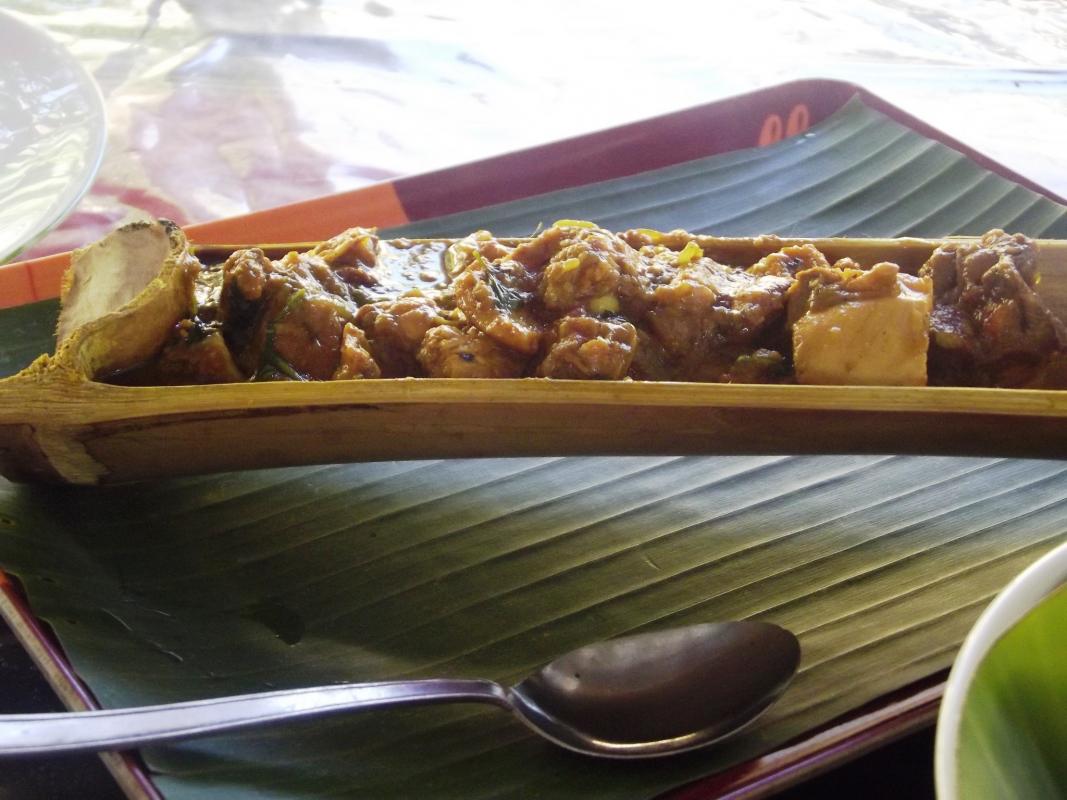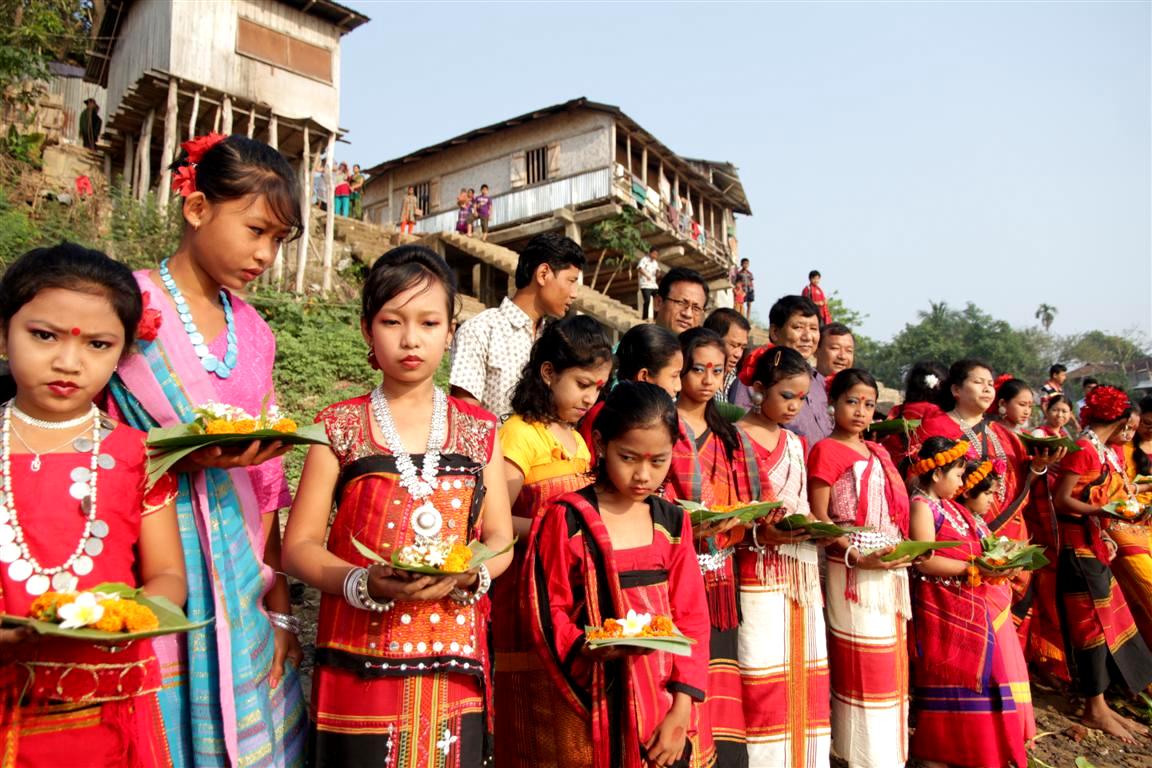While thinking to Bangladesh it seems normal to think at “the land of Bengali people”. Though this concept is not wrong, at the same time it is also true that “northeastern” minorities are living in Bangladesh, especially all along the borders with North-East India.
Bangladesh can count at least 2 million people belonging to indigenous ethnic minority common to North-East India, for an approximate number of 27 ethnic groups (official statistics. Real data could be higher). The central-northern part of Bangladesh (Mymensingh, Netrokona) is home of Garo and other Garo related sub-tribal groups. The north-eastern part of Bangladesh (Sylhet) is home of Khasi, Tripura, Manipuri and Garo groups. The south-eastern region, also called “Chittagong Hill Tract”, is home of the largest number of indigenous population and groups of Bangladesh. There we can find a wide territory that is home of Chakma, Marma, Tripura, Tanchangya, Mro and many other groups.
These groups preserve most of the original traditions of their “related” in India, so for example among these groups is common the consumption of pork meat, home-made liquor and fermented drinks, etc, while those foods and drinks are less widespread in the Muslim-majority remaining part of Bangladesh. In the same way indigenous groups of Bangladesh preserve their own mother-tongue, dress code and religion (so for example a Garo girl of Bangladesh wears “dokmanda” and normally is Christian, while a Chakma girl wears “pinon-hadi” and follows Buddhism, a Tripura person is basically Hindu, etc).
Otherwise, as unavoidable, some of the typical features of these groups are influenced by the national characteristics and laws of Bangladesh. So for example the matrilineal traditions of Garo and Khasi are reduced and softened by the strong paternal Bengali society, till becoming more a pure “family matter” than a social fact. In the same way, while laws of Bangladesh have nothing against pork meat, legal restrictions in alcohol consumption have heavily affected the food habits of many indigenous groups.
Also the indigenous languages are often influenced by Bangla language, more than the related language spoken in India. Just for example, the Garo language spoken in India (often called “A’chick”) is very different from the Garo language of Bangladesh (often called “Abeng”). Interesting too, the “A’chick” language is normally written in roman font, while the “Abeng” language is written in Bangla alphabet (of course, the original Garo language is only spoken and written form is later).
After this short introduction on the indigenous’ background in Bangladesh, I am glad to interview a close friend belonging to Chakma community. I think we can learn a lot from his personal experience:
Q: What is your name and to which ethnic group do you belong?
A: My name is Bukku Chakma. I belong to the Chakma indigenous community of the Chittagong Hill Tract (CHT) in Bangladesh. The indigenous people living in this part of Bangladesh are often known also as “Jummo” community.
Q: In the place you come from, which other indigenous ethnic group are present and live around you?
A: My birthplace is Dighinala (Khagrachari). All over around are living Bengali settlers arrived from the Bengal’s lowlands, as the whole CHT is subject to a special governmental administration and is under the direct control of Bangladesh Army. Including Chakma, Tripura and Marma, in my birthplace are living a total of 11 different indigenous ethnic groups. Because of their general very poor economical situation, they have to dwell in remote and impracticable hilly areas. Otherwise, the Bengali settlers use to live near the “bazaar” areas, main roads and all around the police and army camps.
Q: What is normally the relation with the Bengali population living in your homeland?
A: Frankly, we have not regular relations with them and without any special or practical needs we don’t go meet them. And one of these “special and practical needs” is that most of the shops and businesses are owned by Bengalis. Our traditional agriculture and society is based on a so called “subsistence economy”, much weaker than the organised and powerful business mentality of Bengalis. Moreover, the prolonged unstable political situation of the CHT, the omnipresent activity of Army, Police and Border Guard did not allow us to develop our business and economy unlike the Bengalis could.
Q: In which way do you feel your ethnic group’s culture and tradition are different from the Bengali one?
A: Cultivating on hilly ground, struggling with the jungle, cultivating without harm the environment, building houses on stilts, controlling with respect the Nature keeping humanity in contact with Creation – all these things are absent in Bengali culture. Moreover I can list also the food habits, religion, traditional social organisation…
I want to give also an example. Every year some people die during rainy monsoon because of landslides. But when we read with attention the newspapers and the reports, we can see most of the dead people are Muslim settlers came from lowlands. When the indigenous people build their houses, they don’t cut the mountain or the trees around. Their residences are fully compatible with the surrounding environment. Our traditional relationship with the Nature is a fundamental value shaped by thousands of years of life in our lands. This is totally alien to settlers.
Q: Have you even been in India?
A: Yes, in my early childhood I had the experience to go to Tripura in India. But it was not for an enjoyable reason. In a troubled context of clashes and violence fomented by Bengali nationalism, Army and settlers, in 1986 my family among around 30,000 people of the “jummo” indigenous ethnic group had to cross the Bangladesh-India border and try to take refuge in India. After crossing hostile nature and jungles, once reached Tripura we learned that the limit of refugee they could accept was full and we were returned. So we had to come back to our civil war zone. Finally in 1989 we could be able to find refuge in the refugee camp of Pancharam Para, in the India Tripura. My childhood basically was spent there.
Q: What is your relation with the other indigenous person living in India, if you have any relation with them?
A: In our refugee camp there were not many indigenous present. Of course we met some of them at the bazaar, where they sold vegetables and fruits. Sometime we also met them when we went to collect our “refugee food ration”. Not far from our camp there were some villages inhabited by Riang, Tripura, Jamatia, Lusai, ecc. I think they were very sympathetic with us. Without their cooperation our life would be impossible in the refugee camp. When I occasionally had chance to hear their talks, often I heard many of them expressing grief for our condition.
Previously published in: http://www.nelive.in/north-east/art-culture/north-east-bangladesh





Having read this I believed it was rather enlightening.
I appreciate you finding the time and energy to put this information together.
I once again find myself spending a lot of time both reading and commenting.
But so what, it was still worth it!
Thanks a lot